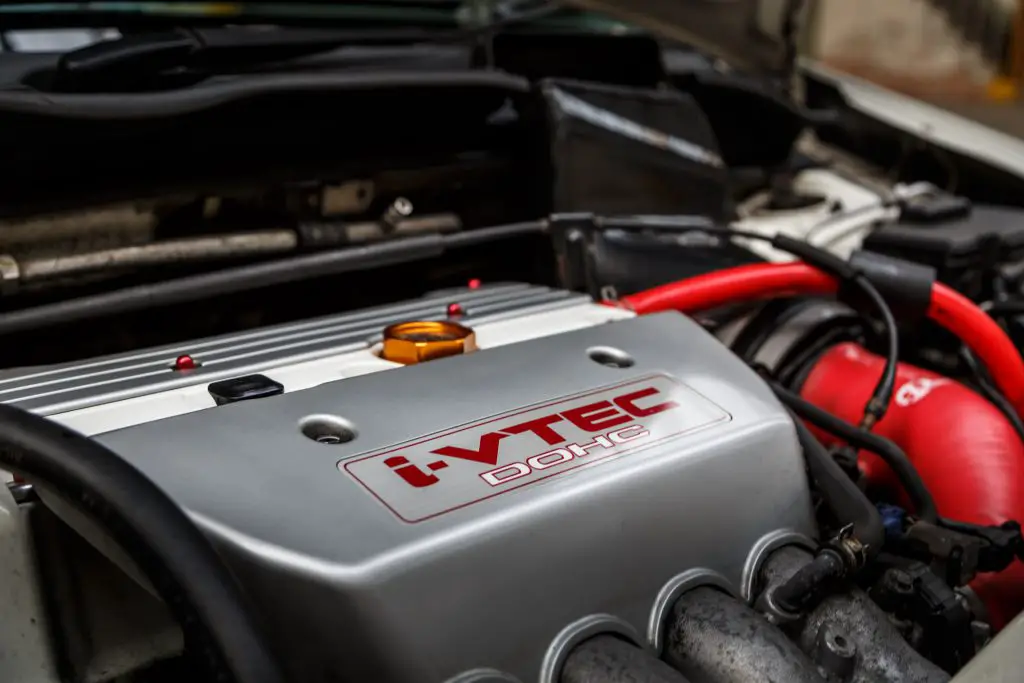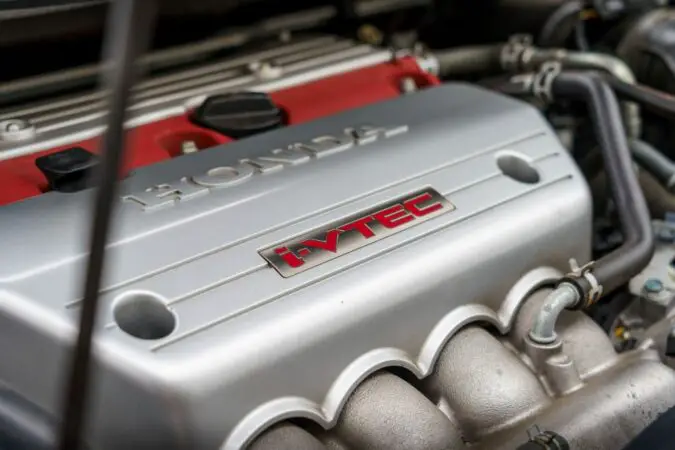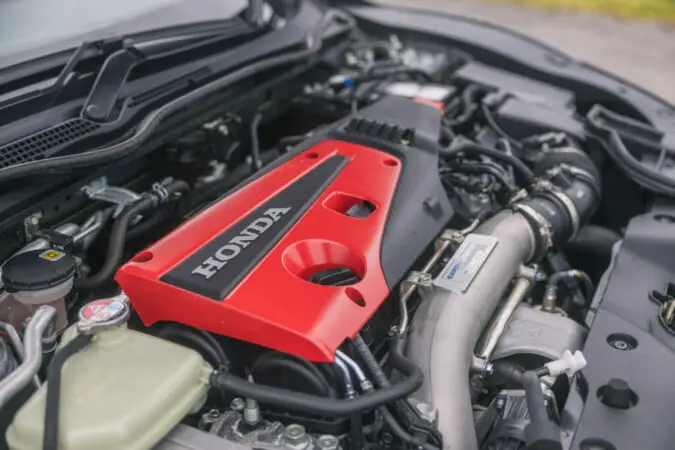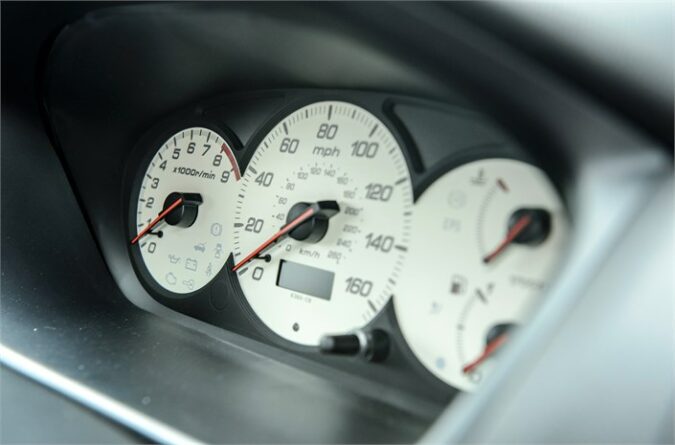Are you planning to purchase a Honda and you want to learn more about what is VTEC? Well, if that is the case, then you are at the right place because, in this article, there will be quite a lot to cover on this topic.
Doing your own research on a certain feature that a car offer is a way to go. You need to be properly informed about every feature that a car can offer before you make a purchase. Especially when it comes to V-TEC. A lot of people think that the V-TEC system is something like a nitrous button, which is not actually true.
So, you need to learn more about this and clear the misconceptions that you have concerning this type of system. These systems like the VVTi, V-TEC, VANOS, and others were invented for different purposes. Which is saving fuel. But more about that, we are going to elaborate in the following chapters.
Now let’s take a look at what we are going to cover in this article. First, we are going to learn what is VTEC and see what this system is all about. Then, we will cover the different types of VTEC and the pros and cons of this system.
Then, we will compare the V-TEC vs VVTi. As well as the engines that use V-TEC and similar systems used by other manufacturers. So, if you want to learn more about this topic, feel free to follow along.
What Is VTEC
Now let’s begin with the basic stuff and learn more about what is VTEC in general. Since that’s why you are here, to learn more about this system.
If you didn’t know, VTEC stands for Variable Valve Timing & Lift Electronic Control. So, you can see that this is not your ordinary variable valve timing system that is present on other cars that only have a system to alter the work of the camshafts.
VTEC is a system that has a different set of camshafts lobe sizes to offer maximum performance and efficacy. So, each of the cylinders has three lobes. Two smaller ones and one bigger one.
The inner cam lobe which is the thickest of the three is located in the middle. This cam has a higher lift and is basically doing all the hard work and brings you the power at high RPM. This is the second profile.
The first camshaft profile is the two smaller lobes with lower cam profile and these lobes activate two separate valves of this system at lower RPM.
There is also a third camshaft profile, which is known as a three-stage V-TEC. But this system is not as broadly used as the two-stage V-TEC.
The important thing about the V-TEC is that it has a task to improve the efficacy of the V-TEC engine. Which results in higher performance at high engine RPM. And this system also delivers low fuel consumption at lower RPM.
So, you are familiar with the saying, “the VTEC kicked in”. This is the case when the center camshaft profile kicks in to improve the performance at higher RPMs. So, we learned what is VTEC, now let’s move on and learn more about the different types.
Types Of VTEC
Now that we learned what is VTEC, we can move on and learn more about the different types of V-TEC that exist out there.
What is worth noting is that there are a few different types. And we are going to cover them in detail with their main features and their operating procedures.
1. SOHC VTEC
As we learned what is VTEC, the first type of VTEC that we would like to cover is the SOHC VTEC. So, let’s first learn what is SOHC.
As you probably know, Honda engines implement an overhead valve train. So, on top of the head, there is a camshaft or two of them. And this is basically what SOHC refers to.
SOHC is an abbreviation that means Single Over Head Camshaft. So, on these engines, there is only one camshaft on top of the cylinder head.
For this purpose, the camshaft has to be a lot more complex since it activates both the intake and exhaust valves. Hence, that’s why the camshaft replacement cost is often very expensive. This design was implemented on the D-Series and J-Series of engines that Honda produces.
The SOHC design has a lot of benefits, like improved fuel efficiency. But it also has a tradeoff because these engines were using the V-TEC only on the intake valves. This was the case because the V-TEC required a third rocker arm and cam lobe for each intake and exhaust side.
And because of some engineering factors, Honda was not able to implement the V-TEC and limited the V-TEC to only the intake side.
But this problem was sorted out in 2009 when SOHC VTEC was introduced for both the intake and exhaust sides on the J237A2 engine. This engine used a total of six cam lobes and also six rocker arms per single cylinder.
Overall, if you want very good fuel efficiency, going for a SOHC design is the way to go in our opinion. So, we learned what is VTEC SOHC, and now let’s learn more about DOHC VTEC.
2. DOHC VTEC
Now that we covered what is VTEC SOHC, we can move on and learn what is the DOHC V-TEC system. So, we noted that the SOHC VTEC had a limiting factor when it come to its application because of the use of a single camshaft, it was only able to activate the intake valves.
And this is where the DOHC V-TEC comes into play. If you don’t know, DOHC stands for Dual Overhead Camshaft. This type of engine design implements two camshafts on top of the cylinder head. For more context, check out our detailed write-up on SOHC vs DOHC to find out their differences.
One of the camshafts was dedicated to the intake and one to the exhaust. This type of design is worse in terms of fuel economy. But lower in complexity when it comes to implementing the VTEC system.
As we noted previously this type of V-TEC is using two profiles and hydraulically selects the profiles based on the engine RPM. Similar to any variable valve timing system. But as we noted previously, a variable valve timing system does not have different lobe profiles for different RPMs. But only alters the position of the standard lobes.
This DOHC VTEC system implements one bigger lobe for a higher lift and two smaller lobes on both sides that activate in specific intervals depending on the engine RPMs in order to bring maximum efficacy and performance.
Although, we can say that DOHC systems are not as highly fuel efficient compared to SOHC designs. So, if you want the maximum MPG, going for a SOHC is always better. Now that we learned what is VTEC DOHC, we can discuss the next subtypes of VTEC.
VTEC Subtypes
Now that we cleared what is VTEC and learned the two main types, we can move on and start learning about the VTEC subtypes.
What is worth noting is that there are a few of them and each of them carries something different. So, let’s cover them in detail and see more about them.
1. VTEC-E
Now that we covered what is VTEC and learned more about the two subtypes of VTEC. We can move on to the next type, which is the VTEC-E. So, what is VTEC-E?
What is worth noting about the VTEC-E, is that this type of V-TEC is a variation of the SOHC V-TEC design that we previously covered.
But what is different about this V-TEC is that it uses roller rocker arms. And instead of using 4 intake lobes for the two valves and using two lobes for non-VTEC operation and one lobe for V-TEC lobe for activating the V-TEC, this design is using a separate intake cam profile per cylinder.
Which is a big improvement compared to the standard VTEC design. This double-stage VTEC is used on the D-Series of Honda engines. So, we learned what is VTEC, now let’s move on to the next subtype.
2. 3-Stage VTEC
Since we learned what is VTEC, let’s move on to the next subtype of VTEC. Which is the 3-stage VTEC. So, what is the three-stage?
Well, this is another variation of the SOHC VTEC. But what is different about this variation is that it implements three different stages for controlling the intake valve timing and the lift of the valves.
What is also worth noting is that this V-TEC is often called dual V-TEC. Since it has two solenoids that activate the system.
This system debuted in 1992 and these engines have the lettering “D15B” stamped on the block, while the cars sold outside Japan non-JDM markets like in the US, had the D15Z7 stamped on the block.
As we noted, there are three stages involved in this process. The first is the 12-valve mode designed for fuel economy. Then there is stage two which is the 16-valve mode. And there is stage 3, which is the V-TEC stage. This is the stage where the valves open the most and this is practically the stage where V-TEC kicks in.
What is worth noting is that these engines are very popular in the car community. Thus, you often find these VTEC variants if you’re looking for the best project cars under 5k, the cheapest project cars on the market, and the easiest cars to mod, as well as when you’re trying to find cheap JDM cars.
Since they are very unique because of their 3-Stage VTEC. Even though, the engines do not produce a lot of power, about 128hp. But the redline is pretty high at 7,300 RPM.
3. i-VTEC
So, we learned more about what is VTEC, and now let’s discuss more on the topic of i-VTEC. Nowadays you might come across this term quite a bit. But what does it mean? Let’s elaborate.
I-VTEC simply refers to Intelligent-VTEC. This is a system invented by Honda in the early 2000s. What is different about this system is that it combines both V-TEC and Variable Valve Timing Control (VTC).
What is worth noting about the i-VTEC is that this system is the same V-TEC plus variable valve timing on the exhaust camshaft of the engine.
This technology debuted on Honda’s K-family of engines in 2001. And this system is used nowadays on all modern engines, including the J-Series.
The main benefit of this double system is the improved fuel economy of the engine. And how it works is really simple to explain. In this system, only one valve on the intake opens completely at low RPM. This situation is improving fuel atomization and allows a lean air-to-fuel ratio to be used in the engine.
And this drastically improves the fuel economy with the best air-to-fuel ratio. Still, not as good as the SOHC VTEC engines, but it is still quite close to these engines. So, if you can get a K24 or a similar engine from this family, you will definitely benefit from the improved gas mileage (which you can confirm by learning how to calculate your gas mileage).
4. VTEC Turbo
Now that we know what is VTEC, let’s move on and cover the last subtype of VTEC. Which is the VTEC Turbo. So, what is the VTEC turbo?
The VTEC turbo is an engine series that was introduced in 2013. This engine series had to be created since the car industry has shifted to downsizing. So, smaller engines with turbochargers were the new way to go. And this engine family was part of Honda’s Earth Dreams Technology.
This technology not only that it implemented turbocharging as a new method of gaining power. But also implemented direct injection, and dual variable valve timing instead of single VVT. As well as V-TEC on the exhaust camshaft.
Shifting the V-TEC to the exhaust basically ended the traditional sound of the V-TEC engine. But the V-TEC technology in these applications was a great benefit.
Mainly because this new method of exhaust rocker arms allowed the turbo to be spooled much quicker than on standard engine layouts. So, this eliminated turbo lag. And this is why you should get one of these engines if you are looking for a new car.
More specifically the 1.5L turbo inline-4 (just be wary of the Honda 1.5 turbo engine problems) and the 2.0L inline-4 turbocharged engine. These are the mainstream engines right now used both on the Civic and the CR-V.
VTEC Pros & Cons
Now that we learned what is VTEC and the different types of VTEC that are out there, we can move on and learn more about the pros and cons of this system. After all, if you’re thinking of buying an old Honda sports car or sporty Honda cars, this is something you’ll come across.
As you probably know, everything has its pros and cons and so does the VTEC. So, let’s cover them in detail and learn more about the benefits and downsides of this system.
Pros
After we learned what is VTEC, let’s now move on and learn more about the pros of VTEC. What are the positives of such a system?
Well, the biggest positive is that this is basically the replacement for displacement according to a lot of Honda enthusiasts. This V-TEC system gets you the ability to run the engine at extremely high RPM, which is not possible on a regular engine with standard variable valve timing.
This is why VTEC is a very preferable option if you want to get power on the cheap. Even if your car makes 120hp, it will feel a lot faster than a car that has more power because you will be able to shift later than them and beat them in a straight line. As people say, the sky is the limit when you are running a V-TEC.
And not only that, this system, especially the SOHC VTEC will deliver excellent fuel economy for you since this engine is only a single camshaft and this VTEC will make a night and day difference for you at the pump. You will have the power, and also the fuel economy. Now let’s move on to the next topic and that is the cons.
Cons
So, we learned what is VTEC and learned that this is a system that gives you a ton of power at a higher RPM and good fuel economy at a lower RPM. But what are the cons, are there any cons to it?
Well, there are not many cons. The biggest con is probably that the turbocharged engines are no more VTEC. Even though they are called V-TEC.
This is the case because the VTEC is moved to the exhaust camshaft instead of the intake. And this means that no more V-TEC sound and no more performance from this system.
On the other hand, what you will get, will only be the low turbo lag from the turbos. This is a good compromise in our opinion, but not as good a compromise for the folks who want to hear that VTEC kick in. Now that we covered what is VTEC, let’s move on to our next topic.
VVTi vs VTEC
Now let’s take a look at another topic since we discussed what is VTEC, its types, and the pros and cons. And this is the eternal duel of VVTi vs VTEC. Is this a good comparison at all?
Well, not quite. VVTi is not a system that is comparable to V-TEC. As you probably know, VVTi is a system developed by Toyota.
VVTi gives you the ability to use variable valve timing. And this is the ability to alter the work of the camshaft and be able to either retard or advance the timing. And this is a feature that greatly improves fuel economy since you can use various camshaft angles.
But what you don’t get is to use a different set of lobes on the camshaft that have more aggressive camshaft profiles.
And this is the difference between the two systems. On the VTEC engines, you have extra lobes that kick in when you climb up to the RPM in order for you to hear that VTEC kicking in and experience a great boost in performance.
While on the VVTi, you don’t have that option. You are only stuck with the same camshaft profile from start to finish. Which is unfortunate. Because there are even three-stage VTEC engines that have three camshaft profiles. Which we covered previously in this article.
So, you get the idea why VTEC is a much preferable option for you if you want something really fast.
But you shouldn’t get desperate since Toyota also has a VTEC of its own. And this is the VVTL-i. And this is basically Variable Valve Timing And Lift Intelligent System. So, this system offers you the cam phasing feature.
Other Similar Systems
Another similar system to the V-TEC is the MIVEC. This is Mitsubishi’s take on the VTEC. And along with the VVTL-i by Toyota, these are the only two alternatives to Honda’s V-TEC.
Even though, we must admit that no other carmaker achieved the same level of performance as Honda with these designs. This is why this system is one of the most highly regarded ones in the car industry.
It’s for that reason that the highly-tuned and modified Spoon engine is so well-regarded in the tuning industry. Not to mention, given how popular Honda engine swapping is among gearheads.
What Is VTEC: In Conclusion…
In this article, we have covered quite a bit when it comes to VTEC. First, we learned what is VTEC. Then we learned the two types, SOHC and DOHC VTEC. And after we cleared that out of our way, we covered their respectable subtypes including the current VTEC option, which is the turbo VTEC.
Then we covered the pros and cons of this system, as well as the alternatives, we compared the VTEC with VVTi and learned which system is the better option for you.
Also, speaking of camshafts, we’ve written plenty of other guides and resources on camshafts that you might find interesting. We’ve discussed the camshaft position sensor, and the signs of a bad camshaft position sensor (such as a P0017 or P0340 error code, or the P0014 Chevy Equinox diagnostics trouble code).
Previously, we even looked into what the camshaft sensor is, the symptoms of a faulty camshaft sensor, and the location of the camshaft position sensor, in addition to the location of the bank 1 camshaft position sensor.
Frequently Asked Questions
Now let’s answer some frequently asked questions.
What Does DOHC Stand For
DOHC stands for Double Over Head Camshaft. In other words, this is an engine layout that implements camshaft mounting at the top of the engine. Allowing the engine to rev at a much higher RPM than conventional OHV engines.
How Long Do Honda Engines Last
Honda engines are pretty bulletproof and could last for about 300,000 miles. Usually above 250,000 miles is the time when you start noticing the wear and tear in the engine. The older ones before the turbo era would go on forever if you maintain them well.
What Does VTEC Stand For
VTEC stands for Variable Valve Timing And Lift Electronic Control. This is a special system that allows you to rev the engine to a much higher RPM by changing to a new set of cam lobes when you reach a certain RPM.
How Does VTEC Work
The VTEC system is pretty simple to understand. You have the intake camshaft and this camshaft has a different set of lobes for each RPM. For lower RPM you have smaller lobes that do not open the intake valves as much. But when the VTEC kicks in at higher RPM, you get to use the bigger beefier lobe of the camshaft that will deliver you big performance gains.
What Does Si Stand For Honda
Si is a trim level that stands for Sport Injection. This Si trim takes its roots from the 1980s when fuel injection was invented. And back then this was a big thing. So, Honda kept this trim around for decades.
Are Honda Civics Fast
Well, that depends on what Civic we are talking about. Not all Civics are fast. Some of them are average cars. But they have V-TEC and this feature will give you that extra edge at higher RPM.




